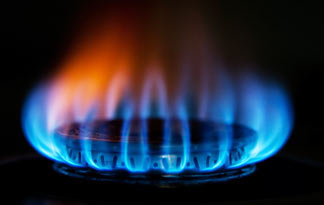
Breaking News
 Interview 1991 - The Origins of the Philosophy of Liberty with Ken Schoolland
Interview 1991 - The Origins of the Philosophy of Liberty with Ken Schoolland
 Silversqueeze: How We Got Here, Where We're Going
Silversqueeze: How We Got Here, Where We're Going
 I asked Grok for Its Opinion on "Grok vs ChatGPT, Which Is Better?"
I asked Grok for Its Opinion on "Grok vs ChatGPT, Which Is Better?"
 You'll own NOTHING and be happy?
You'll own NOTHING and be happy?
Top Tech News
 Build a Greenhouse HEATER that Lasts 10-15 DAYS!
Build a Greenhouse HEATER that Lasts 10-15 DAYS!
 Look at the genius idea he came up with using this tank that nobody wanted
Look at the genius idea he came up with using this tank that nobody wanted
 Latest Comet 3I Atlas Anomolies Like the Impossible 600,000 Mile Long Sunward Tail
Latest Comet 3I Atlas Anomolies Like the Impossible 600,000 Mile Long Sunward Tail
 Tesla Just Opened Its Biggest Supercharger Station Ever--And It's Powered By Solar And Batteries
Tesla Just Opened Its Biggest Supercharger Station Ever--And It's Powered By Solar And Batteries
 Your body already knows how to regrow limbs. We just haven't figured out how to turn it on yet.
Your body already knows how to regrow limbs. We just haven't figured out how to turn it on yet.
 We've wiretapped the gut-brain hotline to decode signals driving disease
We've wiretapped the gut-brain hotline to decode signals driving disease
 3D-printable concrete alternative hardens in three days, not four weeks
3D-printable concrete alternative hardens in three days, not four weeks
 Could satellite-beaming planes and airships make SpaceX's Starlink obsolete?
Could satellite-beaming planes and airships make SpaceX's Starlink obsolete?
New method quickly converts natural gas into solid form for storage

The process can be done in just 15 minutes using a low-toxicity mixture.
It may be a fossil fuel, but natural gas remains a key energy source for now, and some argue it might help us bridge the gap towards more renewable energy. It still has its problems though – the stuff can be hazardous to store or transport, and it is often converted into liquid form to make it easier to work with. However, that requires extremely cold temperatures of around -162 °C (-260 °F).
An emerging method is to instead convert the gas into a solid for easier transport and storage. In fact, nature already does this under certain conditions, as molecules of natural gas can become trapped in "cages" of water molecules, forming what are known as gas hydrates or combustible ice. It's far from a quick process though, taking upwards of millions of years.
Researchers have been trying to speed that up, and now the NUS team claims the fastest conversion time on record. The key ingredient in the new mixture is L-tryptophan, an amino acid that speeds up the reaction rate and traps more of the gas into solid hydrates faster. Taking just 15 minutes, the team says the new method is more than twice as fast as the current standard.
"Our breakthrough can really be put into perspective when you consider that it takes millions and millions of years for gas hydrates to form in nature, yet with our correct addition of secret ingredients to the system in small quantities, the same process can be effected in the laboratory in a matter of minutes," says Gaurav Bhattacharjee, an author of the study.
The end product is much more convenient and safer to store and transport. As a block of ice it's shrunk in volume by 90 times, and is non-explosive and stable enough to be stored in a regular freezer at -5 °C (23 °F). The new method also apparently requires less toxic additives than usual.

 First totally synthetic human brain model has been realized
First totally synthetic human brain model has been realized Mach-23 potato gun to shoot satellites into space
Mach-23 potato gun to shoot satellites into space

